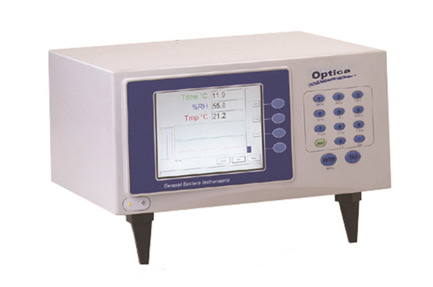Enhancing Operational Efficiency: Precise Moisture Measurement in Luxury Vehicle Paint Shop Production Facility to Prevent Line Stops
Abstract
It has become more important than ever for paint shops to monitor, measure, and calibrate sensors that form part of their sophisticated green manufacturing processes. The presence of moisture dispersed in paints and plastics causes undesirable changes in the physical and chemical properties of the product and the need for the lowest possible environmental impact include the transition from solvent to water-based products, a reduction in energy consumed whilst improving quality standards and an increase in production uptime.
Industry
Automotive paint
Equipment Used
Optica Chilled Mirror Moisture Analyser

For almost 10 years RS Hydro has provided a calibration service for flow and moisture products from Panametrics including the Optica Chilled Mirror Moisture Analyser (originally branded General Eastern). Despite the client's unit being built in 1997, it continues to operate and calibrate normally. Calibrations of the original unit were scheduled during shutdowns however thanks to the client's lean management and kaizen activities, shutdowns are considerably less frequent, but the risk of a line stop an increasing occurrence so following a further risk assessment, the client concluded they should include further redundancy and placed an order for 2 replacement Opticas.
An added complication was due to the length of time the original unit had been in place whereas the wiring between the chilled mirror sensor and the display were inaccessible (under floor) and were a considerable distance apart, since the client required replacements to plug and play during manufacture the factory included a special calibration to include the long cable. Achieving a system accuracy ±0.36°F (±0.2°C) for dew/frost point, ±0.27°F (±0.15°C) for temperature and 0.5% full scale (FS) for pressure.
The Optica is the first choice for accurate measurement and control of water vapor in laboratory, industrial, and calibration settings as it gauges water dew point, temperature, and pressure to national standards and offers the flexibility to display measurements in a range of user-selectable units, including the patented PACER* cycle which automatically cleans the mirror to ensure measurement integrity.
Chilled mirrors essentially measure the dew or frost point temperature directly by maintaining a reflective surface at an equilibrium temperature between dew/frost formation and evaporation. The temperature of the mirror at this point is precisely measured. The chilled mirror sensors comprise a small polished hexagonal rhodium or platinum mirror attached to a thermoelectric cooling module (TEC). The Optica analyser's servo controller induces current to the TEC, cooling the mirror. Illuminated with a regulated gas emitter transmitting infrared light, the mirror reflects light received by a photodetector.
The benefits of using a chilled mirror moisture analyser include long term stability, high accuracy measurement, low cost of ownership, and easy, trouble-free maintenance. Condensation of water vapor on the mirror reduces the light received due to scattering when in water or frost form. This prompts the servo controller to decrease power, slightly warming the mirror. The Optica's control system modulates TEC current to maintain a constant temperature, making the resulting mirror temperature fundamentally equal to the dew or frost point temperature. A precision four-wire platinum RTD embedded in the mirror measures temperature, validated with an accuracy of ±0.36°F (±0.2°C) dew/frost point, enhancing to ±0.27°F (±0.15°C).
Dry bulb temperature is measured with a precise four-wire 100 W platinum RTD, and pressure is measured with a piezoresistive silicon pressure transducer. Dew/frost point and dry bulb RTD resistance signals are conditioned and amplified by the Optica monitor. The pressure sensor transmits an amplified 4 to 20 mA signal. These cardinal measurements calculate various humidity parameters using psychometric equations.
The RTD sensor embedded in the chilled mirror never contacts the process or test environment. Wetted parts include the platinum or rhodium mirror, a stainless steel or mylar vapor barrier, and epoxy sealant, ensuring drift-free humidity measurement for years.
*PACER® (Program Automatic Error Reduction) is a patented contamination compensation scheme. The cycle starts by capturing data, cooling the mirror well below the dew point, forming a thick dew layer, and rapidly heating. The PACER cycle effectively removes approximately 85% of contamination, with manual cleaning recommended when needed. All chilled mirror sensor surfaces are accessible for manual cleaning, a simple process involving wiping with a cotton swab wetted with cleaning solution or distilled water.






















